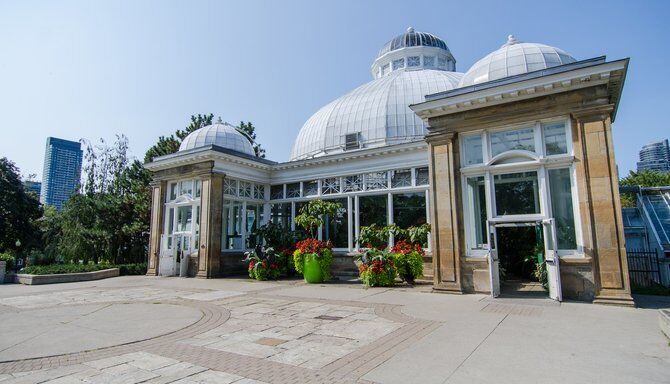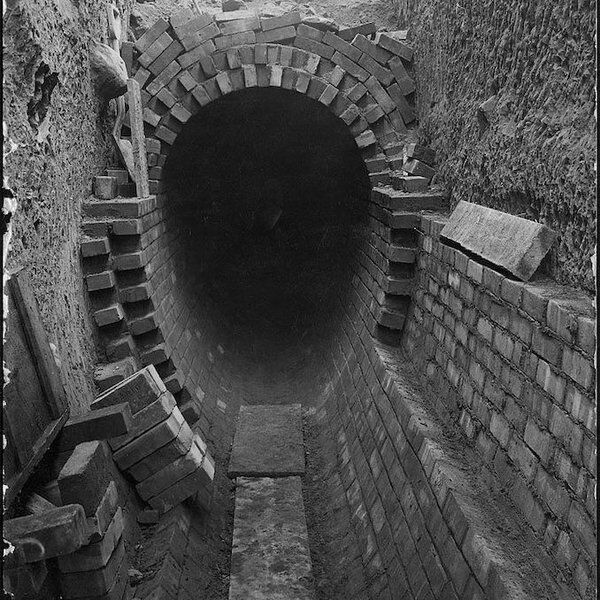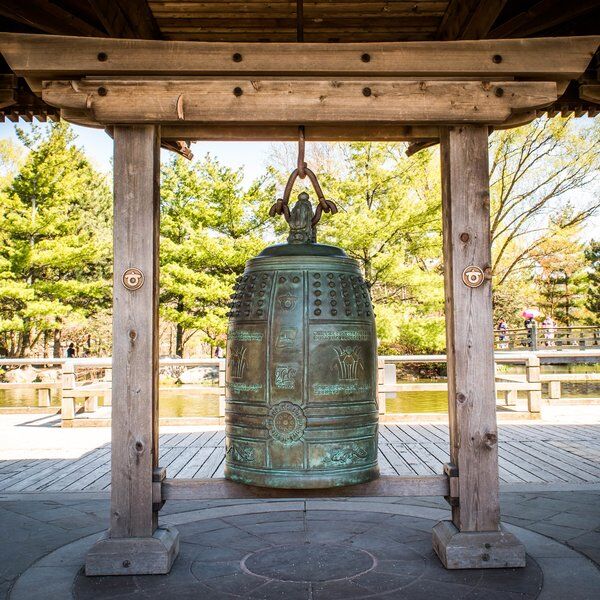Discover Allan Gardens in Toronto
Founded in 1858, Allan Gardens is one of the oldest parks in Canada, nestled in the vibrant Garden District of Toronto. The park owes its origins to a generous donation by politician George William Allan, who gifted the land to the Toronto Horticultural Society. Officially inaugurated in 1860, the park originally known as the “Horticultural Gardens,” quickly became a favorite amongst locals. In June 1973, the park was listed on the City of Toronto Heritage Property Inventory.
Today, Allan Gardens covers 16,000 square feet and includes six interconnected greenhouses. The conservatory contains an array of tropical plants from around the world, including orchids, bromeliads, cacti, succulents, banana trees, and palms. Open year-round, the gardens offer a warm, inviting retreat even during Toronto's coldest days.
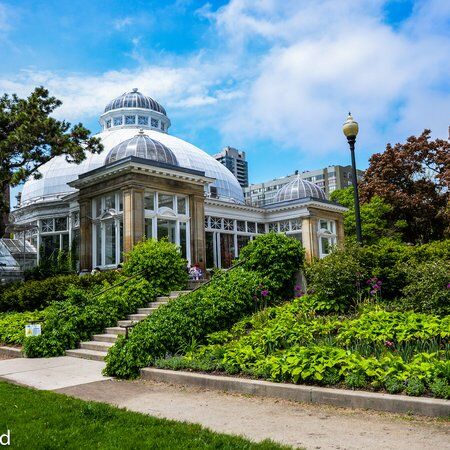
Early History of Allan Gardens
The land that became Allan Gardens was once pine forest and meadow. It is located on the traditional territory of many nations, including the Mississaugas of the Credit, Anishnabeg, Chippewa, Haudenosaunee, and Wendat peoples. The Friends of Allan Gardens honor these nations as the past, present, and future caretakers of this land.
After the Mississaugas sold areas of Toronto to the British Crown during the Toronto Purchase in the 1790s, the area was considered part of Park Lot V. William Allan, who acquired the property in 1819, named his estate Moss Park. His son, George William Allan, inherited the estate and in 1858 donated a five-acre parcel to the Toronto Horticultural Society, aiming to create a botanical garden and green space for public enjoyment.
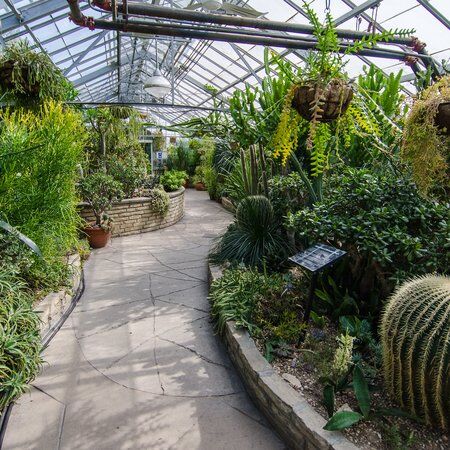
Creating the Allan Gardens
The Toronto Horticultural Society built the Horticultural Pavilion, the first open-air rustic pavilion at Allan Gardens, replaced in 1879 by a grand three-story pavilion. It was designed for concerts, gala balls, conventions, and flower shows. Despite its popularity, the society struggled financially, and by 1888, the City of Toronto had taken ownership of the gardens, adding new features like decorative fencing, electric lighting, and other modern touches. After George William Allan's death in 1901, the gardens were renamed Allan Gardens in his honor.
The Grounds of Allan Gardens
Allan Gardens is managed by the Toronto Parks, Forestry and Recreation Division, and is also maintained by a community support group, The Friends of Allan Gardens. The outdoor arboretum, with 55 species of trees, provides a serene green space for visitors. As of a 2008 assessment, the park has 309 trees representing about 47 species.
The garden has a network of trails connecting various areas of the park, a playground, an off-leash dog area, and a conservatory, so it is great for families who need to entertain both little minds and little paws. One trail links Carlton and Gerrard Street, while another connects the conservatory with the Robert Burns Monument and Sherbourne Street.
Each year, three seasonal floral shows are held in the conservatory: the Spring Hydrangea Show, the Fall Chrysanthemum Show, and the Winter Flower Show. These events transform the conservatory into a canvas of color that pops with fragrance.
Beyond its attractions, Allan Gardens has also featured in Toronto's social history. The park has been a site of protests and rallies concerning suffrage, immigration reforms, and anti-nuclear movements. It has also hosted the National Council of Women of Canada's founding meeting in 1893 and continues to be a venue for the Dyke March celebrations.

The Allan Gardens Conservatory
The Allan Gardens Conservatory, initially constructed in 1909 by Robert McCallum, reflects both neo-classical and Edwardian styles. It features a brick-clad base with sandstone detailing, complemented by elements of stone, wood, glass, and iron. A stand-out feature is its 16-sided glass and aluminum dome, topped with a cupola and finial.
The original conservatory was made from glass, iron, and wood. However, a devastating fire in 1902 reduced the original structure to ruins, destroying many of the cherished tropical plants. Despite this setback, the community's dedication to the gardens led to the construction of a new Palm House, which opened in 1910. The Palm House was also designed by Robert McCallum and soon became the centerpiece of the park.
The conservatory was redeveloped again in the 1950s, with the addition of five new greenhouses. In 2004, the University of Toronto contributed to a sixth greenhouse, bringing the total covered area to approximately 1,500 square meters. This expansion was used for educational purposes by the Friends of Allan Gardens.
Currently, the City of Toronto is restoring the Palm House heritage building. This project includes window glazing and glass cladding replacement, ventilation and air quality system improvements, and the installation of new, barrier-free public washroom facilities. Despite ongoing construction, the conservatory remains open to the public.

The Greenhouses at the Allan Gardens Conservatory
- Arid House: This greenhouse features an extensive collection of desert flora with many cacti and succulents, including agave, opuntia, haworthia, and aloe.
- Tropical House: This house hosts a variety of equatorial plants, offering a tropical experience.
- Palm House: Although currently closed for heritage restoration, the Palm House has always been the focal point of the Allan Gardens, with its collection of palm trees, banana plants, green jade vines, hibiscus, ginger, cycads, and seasonal exotic
- Orchid and Bromeliad House: This house displays an array of orchids, bromeliads, gesneriads, and begonias.
- Cool Temperate House: Known for its seasonal flower shows, this house also features a Koi pond. It contains an impressive collection of plants native to Australia and the Mediterranean, including Jasmine and Camellias.
Additional Features
An administrative building, erected in 1923, is part of the conservatory complex. Originally, a central oval with a drinking fountain commemorating Graeme Mercer Adam was located east of the Palm House, which was replaced by a pergola in 1995.

Visiting Allan Gardens in Toronto
Located in downtown Toronto and bordered by Sherbourne, Carlton, Gerrard, and Jarvis Streets, Allan Gardens is easily accessible and can be reached on foot, by public transportation, by bike, or by car. However, parking is limited, so alternative transportation methods are recommended. The gardens are open daily from 10:00 am to 5:00 pm and admission is free although certain programs may ask for a donation or have a small fee.
Visitor Guidelines
Several visiting guidelines are in place at Allan Gardens:
- Pets are not allowed inside the conservatory, though service animals are permitted.
- Visitors are asked not to bring outside food or drink into the conservatory.
- Photography for personal use is allowed as long as it does not disturb the garden collections.
- Extended photoshoots, wedding photography, or any activities requiring setup or exclusive use of space need a permit.
- Drones are prohibited both in the conservatory and the park.

Explore Nearby Attractions with CityDays
The nearby Distillery District is filled with Victorian industrial architecture, trendy art galleries, restaurants, and 19th-century boutiques. Alternatively, Yonge-Dundas Square runs events, and music enthusiasts can catch live shows at the iconic Horseshoe Tavern, a venue famed for performances by legendary acts like The Rolling Stones and The Strokes.
If you’re interested in exploring more hidden gems like the Allan Gardens and other nearby attractions and you’re looking for a comprehensive yet fun way to do this, then we think you will enjoy one of our CityDays Treasure Hunt in Toronto and in particular, the Old Town Hunt.
Our urban adventures bring the secrets of Toronto to life in a fun and interactive way, so you can uncover the history of the city whilst exploring its often overlooked places of interest such as historic marketplaces and an intriguing fountain.
Along the way, you and your teammates will solve puzzles and clues that interact with the streets themselves to unlock fascinating facts as well as uncover great cafes, pubs, and plenty of surprises.
The Old Town Hunt is an ideal trail for locals, visitors and anyone looking to make the most of this unique and fascinating area. We think you’ll love it but for more information on this tour, and our other Toronto adventures click here: Toronto Urban Adventures | CityDays.
